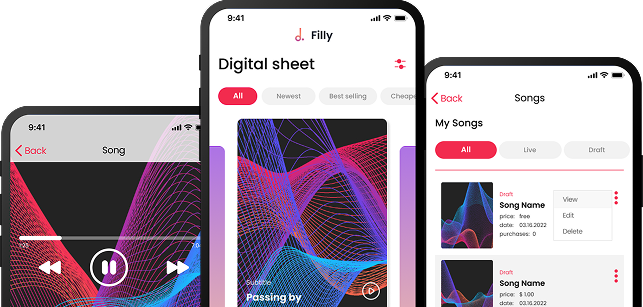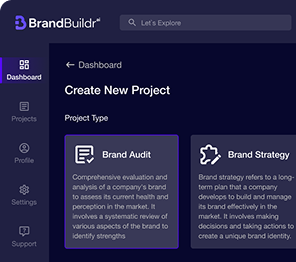The rise of remote work has significantly transformed how businesses operate, especially in the tech industry. Remote teams are now the norm, and with the right strategies, they can be just as, if not more, productive than traditional in-office teams. However, successful remote team collaboration in tech projects requires a structured approach to overcome the challenges of distance, time zones, and virtual communication barriers.
This article will provide a comprehensive guide on the best practices for effective remote team collaboration in tech projects, offering tips to foster productivity, improve communication, and ensure the seamless delivery of projects.

1. Establish Clear Communication Channels
The Importance of Communication in Remote Teams
Communication is the backbone of any team, but it’s even more critical in remote setups where team members are scattered across different locations. Without clear communication, remote tech projects can quickly fall apart, leading to delays, misunderstandings, and inefficiencies.
Choose the Right Tools
Choosing the right communication tools for remote collaboration is the first step toward ensuring effective communication. There are several tools specifically designed to facilitate communication in tech teams:
- Slack or Microsoft Teams for daily communication and instant messaging.
- Zoom or Google Meet for video conferencing, particularly useful for team meetings, stand-ups, and project check-ins.
- Asana, Trello, or Jira for project management and task tracking to keep everyone on the same page regarding project milestones and deliverables.
Encourage Regular Check-Ins
Scheduling regular check-ins or daily stand-ups is essential to keep the team aligned. In tech projects, where development progress needs to be monitored frequently, stand-up meetings (whether synchronous or asynchronous) provide an opportunity for each team member to share their updates, raise concerns, and ask for support.
Make sure that meetings are structured to avoid wasting time, focusing on essential updates, blockers, and next steps.
Define Communication Norms
Setting clear expectations around communication will help avoid confusion. For example, defining norms such as expected response times for messages or emails, preferred communication tools for different types of conversations (e.g., Slack for quick updates, emails for formal discussions), and how to handle urgent issues will create a more organized workflow.
2. Use Agile Methodologies for Flexibility and Collaboration
Why Agile Works Well for Remote Tech Teams
Agile methodologies like Scrum and Kanban are highly effective for remote tech teams due to their iterative nature and focus on flexibility. These methodologies encourage frequent communication, collaboration, and adaptability, making them ideal for fast-moving tech projects with changing requirements.
Key Agile Practices for Remote Teams
1. Sprint Planning: Break the project into sprints (usually two-week cycles), where team members have clear deliverables to achieve within each sprint. This helps remote teams focus on short-term goals while keeping the broader project objectives in mind.
2. Daily Stand-Ups: As mentioned earlier, daily stand-ups ensure transparency and provide a platform for resolving blockers, especially important when the team is dispersed across different time zones.
3. Retrospectives: Conducting regular retrospectives at the end of each sprint helps the team evaluate what worked and what didn’t. Remote teams, in particular, benefit from this feedback loop as it allows them to continuously improve their collaboration practices.
Leverage Project Management Tools
Tools like Jira, Asana, or Monday.com can be used to implement Agile methodologies effectively. These tools offer features such as sprint tracking, task assignments, progress monitoring, and collaboration spaces where team members can interact and update their progress in real time.
3. Create a Transparent Documentation System
The Role of Documentation in Tech Projects
In tech projects, documentation plays a critical role in maintaining clarity, especially when working remotely. Unlike in-office teams, where casual conversations can fill in the gaps, remote teams need detailed documentation to avoid misunderstandings and ensure all team members have access to the same information.
Implement a Centralized Documentation System
Set up a centralized system where all project-related information is stored, including:
- Technical documentation: Architecture, design patterns, code documentation, and API references.
- Project documentation: Roadmaps, milestones, requirements, and timelines.
- Process documentation: Guidelines on code reviews, testing protocols, deployment workflows, and team procedures.
Tools like Confluence, Notion, or Google Docs are great for creating, storing, and sharing documentation. Centralizing this information ensures that team members can access and contribute to essential documents at any time.
Keep Documentation Updated
Outdated documentation can be worse than no documentation at all. Make sure that documentation is updated regularly, especially as the project evolves. Assign team members to own different parts of the documentation to ensure that everything stays current.

4. Encourage a Culture of Accountability
The Challenges of Accountability in Remote Teams
When team members aren’t physically present, it’s easy for accountability to slip, which can impact project timelines and outcomes. In tech projects, where each team member’s contribution is critical, fostering a culture of accountability is essential.
Define Roles and Responsibilities Clearly
Clearly defining each team member's role and responsibilities ensures that everyone knows what is expected of them. In tech projects, this includes clarifying who is responsible for specific parts of the code, who handles testing and deployment, and who oversees the project’s architecture and design.
Use Task Management Tools
Task management tools like Trello, Asana, or Jira allow team members to take ownership of specific tasks and track their progress. When tasks are visible to the entire team, it promotes a sense of accountability, as everyone can see who is responsible for what and how far along they are.
Foster a Results-Oriented Culture
In a remote tech team, focus on results rather than time spent working. Encouraging team members to deliver results and meet deadlines creates a sense of ownership and accountability. Regularly reviewing progress through meetings or task boards helps ensure that everyone is staying on track.
5. Address Time Zone Differences with Flexibility
The Time Zone Challenge in Global Remote Teams
One of the biggest challenges of remote collaboration is working across different time zones. While it can be difficult to find overlapping working hours, with careful planning and flexibility, it’s possible to overcome this challenge.
Establish Core Working Hours
For global tech teams, establishing a few hours of overlap—known as core working hours—where all team members are available for real-time collaboration is essential. These hours should be used for key meetings, such as sprint planning, stand-ups, or project reviews.
Encourage Asynchronous Communication
Not all communication needs to happen in real-time. Encourage asynchronous communication for non-urgent discussions. By utilizing tools like Slack, email, and project management boards, team members can update each other without needing to be online at the same time.
Be Flexible and Accommodating
Respecting time zone differences requires flexibility from all team members. For example, rotating meeting times so that one team member isn’t always inconvenienced can help balance the burden of working across time zones. Flexibility also means allowing team members to adjust their working hours based on their local time zones while still delivering on their commitments.


6. Invest in the Right Tools for Collaboration and Productivity
The Importance of Tools in Remote Tech Projects
The right tools can make or break remote collaboration. To ensure your remote tech team stays productive and connected, invest in tools that facilitate communication, project management, code collaboration, and file sharing.
Essential Tools for Remote Tech Collaboration
1. Communication: Slack, Microsoft Teams, or Zoom for instant messaging and video conferencing.
2. Project Management: Jira, Asana, or Trello for tracking progress, tasks, and deadlines.
3. Code Collaboration: GitHub, GitLab, or Bitbucket for version control and collaborative coding.
4. Cloud Storage: Google Drive or Dropbox for sharing files and documents.
5. Documentation: Confluence, Notion, or Google Docs for maintaining and updating documentation.
6. Time Tracking: Tools like Clockify or Toggl for tracking time spent on tasks, especially important for billing clients or understanding productivity patterns.
Security Tools
For tech projects, security is crucial. Ensure your team uses VPNs, encryption tools, and secure password managers like 1Password to protect sensitive data.

7. Prioritize Team Bonding and Well-Being
Remote Work and Isolation
While remote work offers flexibility, it can also lead to feelings of isolation, which can affect morale and productivity. Prioritizing team bonding is essential to building trust and rapport among remote tech team members.
Virtual Team-Building Activities
Organize virtual team-building activities like online games, informal chat sessions, or virtual coffee breaks. These activities can help team members connect on a personal level, which can improve collaboration and foster a more positive team culture.
Promote a Healthy Work-Life Balance
Remote tech teams should also be encouraged to maintain a healthy work-life balance. Burnout is a real risk in remote settings where boundaries between work and home can blur. Encouraging team members to take breaks, log off after work hours, and use vacation time can prevent burnout and promote long-term productivity.
Successful remote collaboration in tech projects hinges on clear communication, accountability, and the right tools, allowing dispersed teams to work seamlessly and deliver results, no matter the distance.
Conclusion
Remote team collaboration in tech projects can be highly effective when approached with the right strategies and tools. By establishing clear communication channels, leveraging Agile methodologies, maintaining up-to-date documentation, fostering accountability, accommodating time zone differences, and investing in the right tools, tech teams can overcome the challenges of remote work and deliver successful projects. Building a culture of trust, flexibility, and continuous improvement is key to ensuring that remote teams not only meet their goals but also thrive in the process.
Heading 1
Heading 2
Heading 3
Heading 4
Heading 5
Heading 6
Lorem ipsum dolor sit amet, consectetur adipiscing elit, sed do eiusmod tempor incididunt ut labore et dolore magna aliqua. Ut enim ad minim veniam, quis nostrud exercitation ullamco laboris nisi ut aliquip ex ea commodo consequat. Duis aute irure dolor in reprehenderit in voluptate velit esse cillum dolore eu fugiat nulla pariatur.
Block quote
Ordered list
- Item 1
- Item 2
- Item 3
Unordered list
- Item A
- Item B
- Item C
Bold text
Emphasis
Superscript
Subscript





















.avif)



.avif)

.avif)


